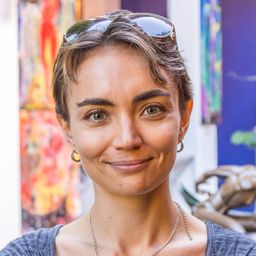14.00 Heterotopia of a Living History House Museum: Alternative Spaces within an Urban Environment
My Session Status
This paper will ask what constitutes an experiential reality of the past as simulated by a living house museum and how this form of heritage simulation informs our understanding of a modern-day metropolis and its cultural and historical heritage. The paper will position living history house museums as performative spaces that function as contestations of the accepted spatial, social, and temporal norms within an urban environment and allow for a form of a “contextual departure” from the present. I will suggest that Foucault’s concept of heterotopia, applied to a living museum space, ties together the site’s manipulation of spatiality, materiality, and temporality. Foucault describes heterotopia as a socially created and lived kinds of spatiality, sites of social practices that can be both concrete and abstract. These sites function through changes in the material space and discursive practices and in important ways mirror the commonly accepted social practices. Thus, the heterotopia of living history house museums creates both discursive and tangible spaces, which arrest time and assert permanency of physical objects in the midst of a continuously changing, fast-paced city, in which consumable goods are seen as transient. I will suggest that the concept of a heterotopia can be used to further unpack the performativity of historic house museums as cultural institutions, which enable us to exercise alternative ways of negotiating time, space, materiality in everyday lives and engage in conversation about alternative futures.
The experience of a living history is established through the engagement of the visitor with the tangible material space of the museum. The special focus of the discussion is the role of the sensory body in the performance of the experiential reality of a living house museum. Thus, the paper will examine these sites as immersive environments, which offer a tactile experience of culture and history while creating both narrative and physical spaces for visitors to “insert” themselves within the cultural production of heritage. Living history house museums offer reconceptualization of the meaning of tangible objects around us. We establish this new relationship with materiality through our sensory bodies. We conceive of ourselves differently and allow ourselves to move and behave in ways that are not acceptable in the world outside of the museum. We perform our new selves with permission granted by the sense of place that cannot be understood other than through embodied experience—of things, of selves, of the environment that brings it all together. In the coming together of all these elements in the immediate, intimate present, the notion of the past is defined as cultural heritage mediated through the living history museum curatorial work and space. Heritage can thus be described along the lines of creativity, performance, impermanence, and affect.
The broader methodological goal of the study was to explore how places, objects, ideas, and subjects are entwined within a historic house museum space, what is unique to these experiences, and what happens similarly or dissimilarly in the everyday life outside of that environment. The paper is based on a year-long qualitative study, which involved all ten of Toronto’s historic house museums. As a researcher, I have inserted myself within the environment of a living history house museum and attempted to open it to social inquiry through various ways of being within it—observing, writing, interviewing, interacting, sensing, entering it, and leaving it. I have carried out a form of phenomenological ethnography, which benefited from combining the strengths of in-depth interviewing and participant observation with auto-ethnography.
